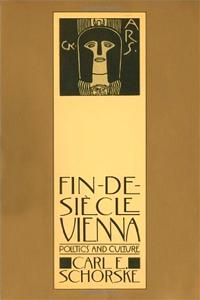
This is the book that started it all: started the "industry" of writers and scholars trying to work out why Vienna, around the turn of the twentieth century, was a hotbed in which modernism flourished in art, in science, in architecture, in music, in psychology, in literature. Whatever "moderism" means, and however one draws the start and end of the period--the end cannot reasonably be placed later than the Anschluss of 1938--something big was going on.
It would be wrong to say that no one noticed what a special, and troubled, era Vienna enjoyed in the last days of the Hapsburg empire, and in the interwar years. Writers such as Stefan Zweig, looked back and wrote down their recollections. Schorske was the first to give the theme, and the questions about what was going on and why, a place in the university world. He had already published four of the seven essays, starting in 1961, which make up the book which appeared in 1980.
In his introduction he acknowledges that the currents of academic thinking were unsympathetic to cultural history. He says this, in rather convoluted language, called by one otherwise positive Amazon reviewer as "hifalutin gobbledygook", language no doubt designed to make his unconventional work palatable to fellow American academics. Because of the conceptual difficulties, as he saw it, of writing a cultural history, he does not even try to do so directly. Instead, he assembles seven essays treating leading figures in the period he is interested in, on the principle of test trenches, as by viewing a few peaks, some more general contours will emerge.
Schorske was working in an American environment, though a German speaker, and never in his 100 years lived or worked in Vienna, or Austria. It is no accident that perhaps the highest peak in his view of the landscape is Freud, because he was working in a world where Freud, or rather an American imaginging of Freud, was riding high. Schorske brings Freud's Interpetation of Dreams together with his difficulties in academic politics and with anti-semitism, and re-interprets oedipal dreams in political terms. Careful not overlay his subject as whole with indefensible interpretations, he overlays his account of Freud with his own analytic reading, which perhaps in his psychoanalytic generation was defensible.
The Freud chapter illustrates a difficulty with Schorske's work: he remarks in his introduction upon the coherence of Vienna's cultural elite, but he does not the social aspect of his themes. In the case of Freud, he might have examined his social connections, friends and enemies and patients. In fact he focusses on and inteprets Freud's inner life.
Academic papers and books have been written in response to the Schorskian narrative of turn-of-the-century Vienna, or rather selected islands in the world, going far beyond these few stray reactions. The honours he received in Austria reflect, surely, not his ability to describe his period well or fairly, so much as to put the subject on the map. Though an outsider, he started an important conversation which has not ended, and which is now appreciated as much in Vienna as anywhere, or more so--witness the Wien 1900 exhibition at the Leopold museum, and related coverage on Austrian television. The book was immensely important in opening a new field, and deserved the Putitzer Prize it garnered. Inevitably later readers will find problems with it. Academic readers will see different problems than general readers, and I have mentioned a couple of my own reservations here. That is all to the book's credit.